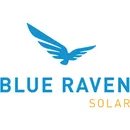Indiana solar incentives, tax credits and rebates
Resources for going solar in 2023

After the full federal solar investment tax credit (ITC), the average solar energy system is $17,822 in Indiana. Besides tax credits, some Indiana residents can benefit from property tax exemptions and net metering or feed-in tariffs.
Key insights
- The average federal tax credit value is $7,638 in Indiana.
- Residents can take advantage of a renewable energy property tax exemption that excludes the value solar panels add to your home for purposes of calculating taxes.
- Recent changes to Indiana’s net metering policies mean residents earn less when they send energy back to the grid.
Solar incentives in Indiana
The federal solar investment tax credit (ITC) is the most significant factor reducing the cost of going solar in Indiana. If you install a residential solar panel system by the end of 2032, you will receive a federal income tax credit equal to 30% of the system's total cost — including equipment, labor and permits.
For example, the average system in Indiana costs around $25,460. With the ITC, you can get a $7,638 tax credit on a system with that cost.
The ITC drops to 26% in 2033 and 22% in 2034.
One solar customer, Alann in Hanover, was eligible for a $7,000 federal credit after installing solar panels. The credit is nonrefundable, so it rolls into the next tax year if the credit is more than your tax liability.
“Sure enough, when tax time came, I took that deduction,” Alann told us. “It spans two years because I had enough deductions last year to go over what they allow, and they finished it out this year.”
Remember, you must claim it when you file federal taxes in the year your solar panel system becomes operational. To do this, you have to complete Form 5695.
Residential solar incentives in Indiana
Most of Indiana’s solar incentives are intended for nonresidential use. The state offers a property tax exemption for residents using solar energy systems, though. The program subtracts the property value added by a solar energy system for the purposes of calculating property taxes.
Renewable energy property tax exemption
The renewable energy property tax exemption incentive applies to residential, multifamily residential, commercial, industrial and agricultural sectors. Solar panels, solar water heaters and other renewable energy equipment are eligible. Fill out Form 18865 and file it with the local county auditor to qualify.
What to know about net metering in Indiana
In many states, net metering programs let you sell any extra energy your solar system generates to your local electric company for a credit on your bill. Indiana ended net metering in 2017, however, so you won’t get as much back for power you send to the grid. Talk to your installer about whether you might be better off investing in a solar battery.
Northern Indiana Public Service Company (NIPSCO) offers a feed-in tariff program, which is similar to net metering. You can get roughly 15 cents to 17 cents per kilowatt-hour (kWh). To qualify, your setup must be between 3 kilowatts (kW) and 1 megawatt (MW). It also must be insured and meet all the interconnection standards.
There’s a nonrefundable processing fee you'll have to cover. It's $25 plus an extra dollar for each kW your setup generates. So, if you're going for a 100-kW project, the fee would be $125. Once you're up and running, NIPSCO will send you monthly payments.
» GREENEST STATES: Indiana ranks No. 46
Solar resources in Indiana
Below are additional resources that can guide you through transitioning to solar in Indiana.
- Going Solar in Carmel
- Going Solar in Gary
- Going Solar in Goshen
- Going Solar in South Bend
- Going Solar in Richmond
- Going Solar in Zionsville
- Hoosiers for Community Solar
- Indian University Environmental Resilience Institute
- NIPSCO renewable energy
- South Central Indiana REMC
- Southern Indiana Power renewable energy
- Indiana Office of Energy Development solar energy facts
» GUIDE: Solar panel installation
Find solar companies in Indiana
Compare popular solar companies available in Indiana below. Read our guide to finding the best solar companies for more.
| Tesla Energy | SunPower | Blue Raven Solar | ShopSolar | Green Home Systems | |||
|---|---|---|---|---|---|---|---|
| Primary |  | Tesla Energy | Read reviews | Customer Ratings 2.2 | Free consultation | Payment options
Cash, lease, loan
| Warranty
25 years (system)
|
| Primary | SunPower | Read reviews | Customer Ratings 4.3 | Free consultation | Payment options
Cash, loan, lease
| Warranty
10 to 25 years
| |
| Primary |  | Blue Raven Solar | Read reviews | Customer Ratings 4.7 | Free consultation | Payment options
Cash, loan
| Warranty
25-year manufacturer warranty, plus a 10-year workmanship warranty
|
| Primary |  | ShopSolar | Read reviews | Customer Ratings 4.7 | Free consultation | Payment options
Cash, loan
| Warranty
Varies
|
| Primary |  | Green Home Systems | Read reviews | Customer Ratings 3.8 | Free consultation | Payment options
Cash, loan
| Warranty
Varies by system
|
FAQ
Can I get solar panels for free in Indiana?
There are no programs for free solar panels in Indiana. You can lease a solar energy system with little to no upfront costs if you can’t afford to pay out of pocket.
» FREE SOLAR PANELS: Are they really free?
How much can I save with solar panels in Indiana?
In Indiana, the average savings is $21,994 over 25 years. Even if you don’t generate 100% of your energy needs, you can still save a lot of money compared with paying traditional utility bills.
Are there any disadvantages to going solar in Indiana?
The biggest disadvantage to going solar in Indiana is that it costs around 6% more than in other states. The state also offers few incentives to help make solar more affordable. Indiana gets less sun than other states — only 2.5 to 4 average peak sun hours — so you may be unable to replace all your energy with solar.
» MORE: Solar energy pros and cons
Can my HOA restrict solar panels in Indiana?
A law passed in 2022 made it more difficult for homeowners associations (HOAs) to block the installation of solar panels. Under the law, any homeowner part of an HOA that forbids solar panels can proceed by following a process that includes gathering signatures of other HOA members who approve of the plans.
How can I pay for solar panels?
Cash is always an option, but most people finance solar panels with a solar loan. You can also lease solar equipment if you feel a loan isn’t right for you.
» SOLAR PANELS: Lease vs. buy
Bottom line: How much are solar panels in Indiana?
It will cost you around $25,460 on average for solar in Indiana. With the ITC, though, you could see that price drop to $17,822. Even better, after 25 years with your system, you may rack up around $21,994 in savings.
The ConsumerAffairs Research Team conducted an in-depth analysis to determine how much it costs to go solar in Indiana and the average solar costs in other states.
Solar costs: Indiana vs. nearby states
| Upfront cost* | ITC value (30%) | Typical system size | Average cost per watt | Payback period** | Estimated net savings | |
|---|---|---|---|---|---|---|
| Indiana | $25,460 | $7,638 | 9.5 kW | $2.68 | 12 years | $21,994 |
| Illinois | $20,476 | $6,143 | 7.5 kW | $2.73 | 12 years | $16,585 |
| Ohio | $23,040 | $6,912 | 9.5 kW | $2.56 | 12 years | $19,272 |
| Kentucky | $25,740 | $7,722 | 11 kW | $2.34 | 12 years | $20,247 |
| Michigan | $19,670 | $5,901 | 7 kW | $2.81 | 10 years | $23,652 |
Article sources
- United States Environmental Protection Agency, “ Summary of Inflation Reduction Act provisions related to renewable energy .” Accessed Oct. 12, 2023.
- Solar Energy Industries Association, “ Indiana Solar .” Accessed Oct. 12, 2023.
- DSIRE, “ Indiana Solar Programs .” Accessed Oct. 12, 2023.
- EcoWatch, “ How Much Do Solar Panels Cost in Indiana? ” Accessed Oct. 12, 2023.
- Indiana General Assembly, “ House Bill 1196 .” Accessed Oct. 12, 2023.
- EnergySage, “ Indiana solar panels: local pricing and installation data .” Accessed Oct. 12, 2023.
- DSIRE, “ Net Metering in Indiana .” Accessed Oct. 12, 2023.
- The Herald Bulletin, “ New net metering policies shake up Indiana's solar industry .” Accessed Oct. 12, 2023.
- IndyStar, “ Solar power is about to become a lot more expensive for Hoosiers as net metering expires .” Accessed Oct. 12, 2023.
- Indiana Office of Energy Development, “ Residential and Homeowner Incentives .” Accessed Oct. 12, 2023.
You’re signed up
We’ll start sending you the news you need delivered straight to you. We value your privacy. Unsubscribe easily.
